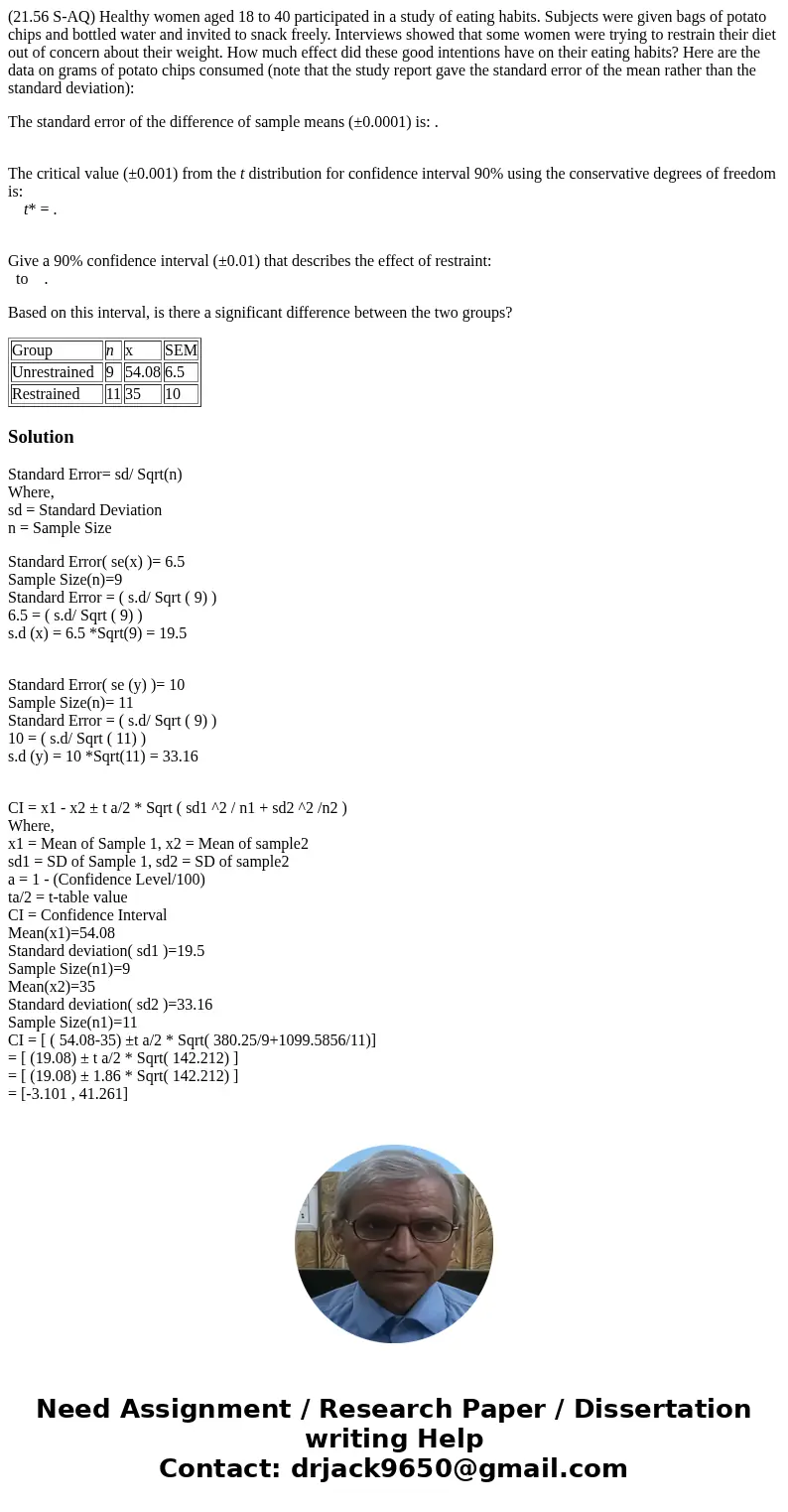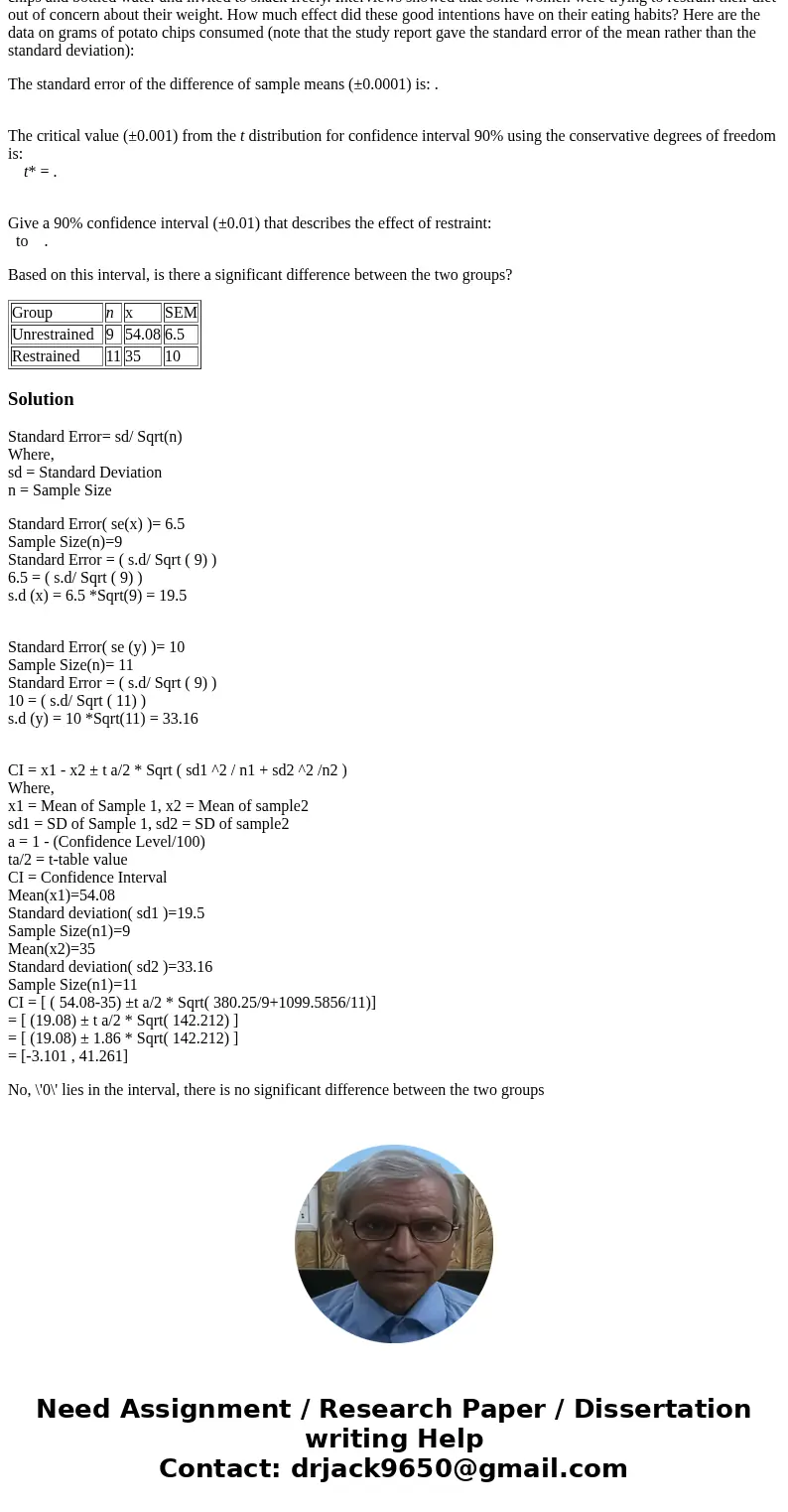2156 SAQ Healthy women aged 18 to 40 participated in a study
(21.56 S-AQ) Healthy women aged 18 to 40 participated in a study of eating habits. Subjects were given bags of potato chips and bottled water and invited to snack freely. Interviews showed that some women were trying to restrain their diet out of concern about their weight. How much effect did these good intentions have on their eating habits? Here are the data on grams of potato chips consumed (note that the study report gave the standard error of the mean rather than the standard deviation):
The standard error of the difference of sample means (±0.0001) is: .
The critical value (±0.001) from the t distribution for confidence interval 90% using the conservative degrees of freedom is:
t* = .
Give a 90% confidence interval (±0.01) that describes the effect of restraint:
to .
Based on this interval, is there a significant difference between the two groups?
| Group | n | x | SEM |
| Unrestrained | 9 | 54.08 | 6.5 |
| Restrained | 11 | 35 | 10 |
Solution
Standard Error= sd/ Sqrt(n)
Where,
sd = Standard Deviation
n = Sample Size
Standard Error( se(x) )= 6.5
Sample Size(n)=9
Standard Error = ( s.d/ Sqrt ( 9) )
6.5 = ( s.d/ Sqrt ( 9) )
s.d (x) = 6.5 *Sqrt(9) = 19.5
Standard Error( se (y) )= 10
Sample Size(n)= 11
Standard Error = ( s.d/ Sqrt ( 9) )
10 = ( s.d/ Sqrt ( 11) )
s.d (y) = 10 *Sqrt(11) = 33.16
CI = x1 - x2 ± t a/2 * Sqrt ( sd1 ^2 / n1 + sd2 ^2 /n2 )
Where,
x1 = Mean of Sample 1, x2 = Mean of sample2
sd1 = SD of Sample 1, sd2 = SD of sample2
a = 1 - (Confidence Level/100)
ta/2 = t-table value
CI = Confidence Interval
Mean(x1)=54.08
Standard deviation( sd1 )=19.5
Sample Size(n1)=9
Mean(x2)=35
Standard deviation( sd2 )=33.16
Sample Size(n1)=11
CI = [ ( 54.08-35) ±t a/2 * Sqrt( 380.25/9+1099.5856/11)]
= [ (19.08) ± t a/2 * Sqrt( 142.212) ]
= [ (19.08) ± 1.86 * Sqrt( 142.212) ]
= [-3.101 , 41.261]
No, \'0\' lies in the interval, there is no significant difference between the two groups


 Homework Sourse
Homework Sourse